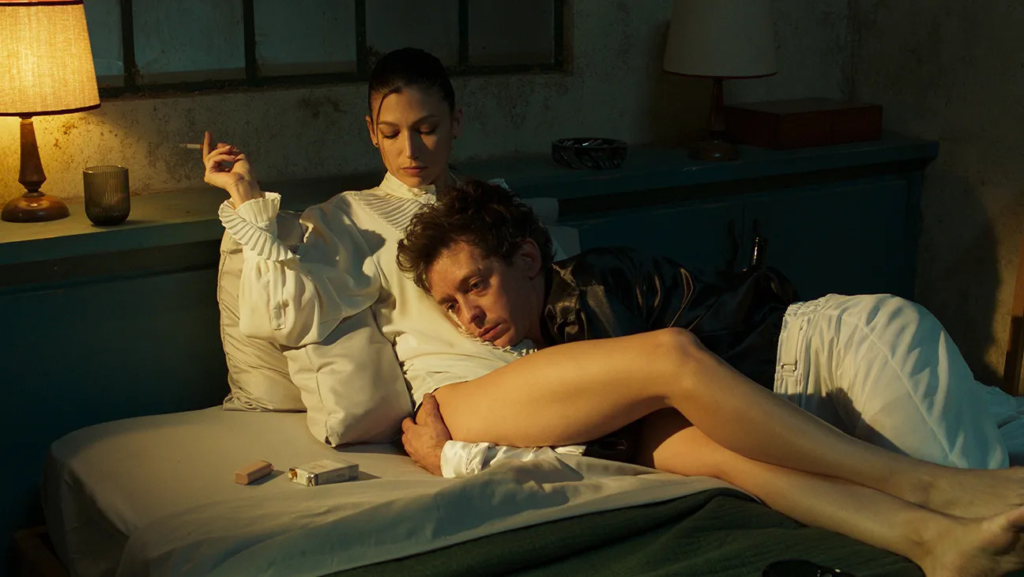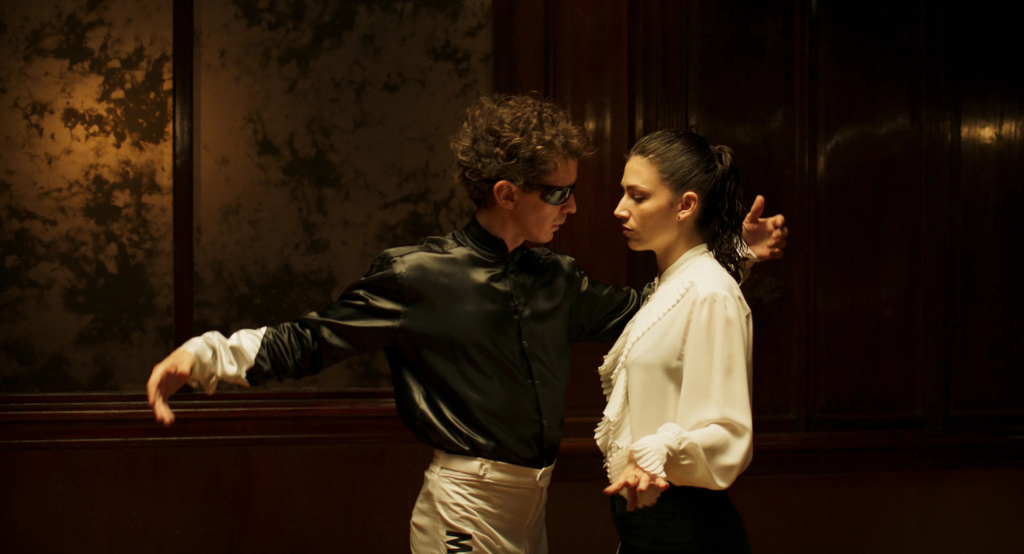Director: Luis Ortega
Writer: Fabian Casas, Luis Ortega, Rodolfo Palacios
Stars: Adriana Aguirre, Roberto Carnaghi, Úrsula Corberó
Synopsis: Remo’s self-destructive behavior overshadows his talent. Abril, an upcoming jockey is pregnant by Remo and has to decide between child or continuing to race. They both race for Sirena, an businessman who saved Remo’s life in the past .
It has been a long while since Argentine filmmaker Luis Ortega directed a film–six long years where the state of cinema itself has changed vastly. The last time was in 2018 with El Angel, a feature about a criminal with an angelic face whose acts match his ruthless and remorseless demeanor. Through the misdeed-riddled journey of his titular “angel”, Ortega explored the identity crisis he goes through upon each treacherous corner and encounters with death–all of which was accompanied by a smashing, well-selected soundtrack. The only thing that left El Angel with a sour taste in your mouth is its cliched treatment of masculinity and internal angst by self-expressionistic confusion. It kept the film from being up to par with its attempts at provocation.

Ortega fixes some of these issues in his return to filmmaking, Kill the Jockey (El Jockey, screening in competition at this year’s Venice Film Festival). This crime dramedy contorts itself into a complex position that baffles and fascinates simultaneously because of its ambitiousness. This has some similarities with El Angel, as they both contain a lawless nature within their themes of individuality and trans allegory filled with a freeform use of magical realism and surrealism–distancing themselves from the grounded nature they present initially. Steeped in distinctiveness, Kill the Jockey places Ortega in a unique spot of his own direction-wise, while crafty pretentiousness gets in the way of his stylistic choices. Yet, since it is handled with plenty of confidence and zero grandiosity, the whole ordeal comes out as captivating rather than vexatious.
The jockey is Remo (Nahuel Pérez Biscayart), a celebrated horse rider who has been saved from an “ill-fated” situation by some mobsters. Their leader, Sirena (Daniel Giménez Cacho), has put Remo onto his dirty loss of criminal doings. Remon works for them not because of necessity—although the lavish life is appealing to him as it drowns the man–but because of an undisclosed, endless debt that has been put onto the jockey. As one of the criminals states: “Misfortune is the best school.” And Remo is going to learn that the hard way. Ortega provides no explicit clues for why Remo is in deep trouble. Still, he slowly demonstrates the jockey’s past as an underground racer who bet against himself and ran away with most of the cash.
Remo has tried to sabotage this “relationship” while in an alcohol and ketamine daze. What he does is taint it even more to an irreparable degree. In his latest race, the jockey interferes and gets into even more trouble as Sirena condemns him for his actions. Remo’s tampering leaves him hospitalized after a brutal accident, though he escapes when the kingpin sends people to get him–donning a woman’s garb that paves the way for a journey of self-discovery. On the other hand, another contribution to his identity voyage is his girlfriend, Abril (Úrsula Corberó). She is, like him, a jockey and competed against Remo more than a handful of times. But her pregnancy will potentially limit her horse racing days for good.
Abril sees Remo’s self-destructive behavior and emotionally distances herself from him. The only way Remo can be in her life again is to “die and be born again”. The quote is taken literally and figuratively by both Ortega and Remo, where they connect the garb and the accident that sparked the jockey’s journey of personal truth with themes of rebirth and gender roles via narratively perplexing means and tone-shifting mechanisms. Kill the Jockey then twists and shapeshifts itself to fit the weirdness of its premise. Remo and Abril’s journeys begin with a dance of stupor and self-expression–each taking a different mantle than before–and later follows with a dual gender role reversal.
As Abril sparks an affair with another jockey, Ana (Mariana Di Girolamo), Remo wanders through the streets, transforming into the person they were. This is why the garment and fur coat appears to be absorbed into him, paving the way for the rebirth Abril mentioned to win her back. He begins to have more feminine aspects the longer he stays in the guise. It comes from his candor. At one point, he even gets mistaken for a woman, which lifts his heart and provides some assurance about his new life. The cat-and-mouse game between Remo and Sirena gets tiresome and frivolous; however, since Ortega provides the film with some internal beauty amidst its strange demeanor, you begin to lure yourself into the whole ordeal with curiosity and intrigue.

In the way it develops, I felt that Luis Ortega was channeling his inner Pedro Almodóvar, particularly taking inspiration from the legendary Spanish filmmaker’s work from the 1980s (Pepi; Luci; Bom, Tie Me Up, Tie Me Down; What Have I Done to Deserve This?). The essence of young Almodóvar is felt throughout the entirety of Kill the Jockey, with many scenes feeling like they could have been directed by him back then. However, the connection with the themes of self-discovery and identity makes the similitude more potent. Ortega does not delve into provocation or intense eroticism, unlike the Spaniard would, like in the opening credits of Matador, where we see Diego Montez pleasuring himself to violent scenes in Mario Bava’s filmography. Yet he encapsulates what those works entailed regarding radicalness, sexual freedom, and self-expression.
Ortega might not be up to par with Almodóvar, although the comparison is unfair. However, the Argentine is showing some growth in terms of expression in his cinema, creating motifs and ambiguous metaphors worthy of another rewatch to sink your teeth in. Kill the Jockey is a peculiar crime flick with both comedic and dramatic tendencies that are not hidden but instead embraced thoroughly. This strangeness that emerges is not a mere foible, and it helps us keep it under scrutiny instead of annoyance.





